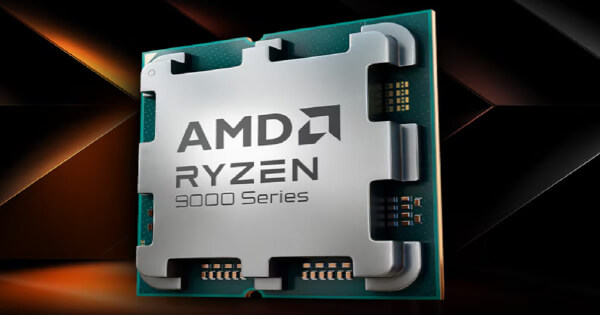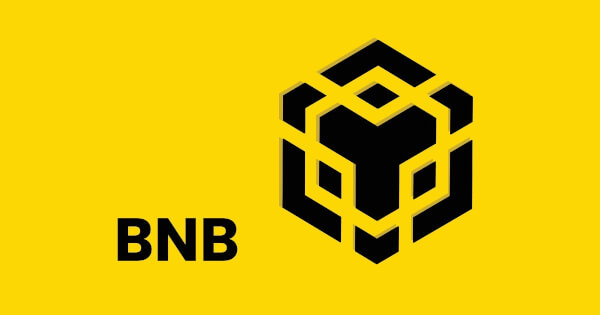Uncategorized
Decentralized Identity: Empowering Users with Ownership Through Investment | IDOs News

In the modern digital age, the problem of identification has become increasingly complicated. Traditional identity systems are regularly centralized, exposing customers to privacy risks and safety vulnerabilities. However, decentralized identity answers powered by blockchain generation offer a promising opportunity. By setting customers on top of their personal identification records and enabling stable, verifiable, and privateness-keeping identification control, decentralized identity is revolutionizing the manner in which we think about virtual identification. In this newsletter, we explore the concept of decentralized identification, its capability blessings, and the investment opportunities it offers inside the evolving panorama of virtual identity management. When it comes to investing, consider a visit to Bit Motion Ai where you can learn about investing from professionals. Register now and start learning!
Understanding Decentralized Identity:
Decentralized identity refers to a virtual identification control version that is based on principles of self-sovereignty, privacy, and user management. Unlike conventional identity structures, which rely upon a centralized government to verify and authenticate identity records, decentralized identification answers leverage the blockchain era to allow individuals to manipulate their own identity information securely and transparently.
At the core of decentralized identity is the idea of a decentralized identifier (DID), a unique identifier associated with a person or entity that is saved on a blockchain. DIDs allow customers to set up and manipulate their digital identity through one-of-a-kind platforms and applications without relying on intermediaries or third-party identification providers.
Decentralized identity answers additionally contain cryptographic techniques, which include 0-understanding proofs, verifiable credentials, and decentralized authentication protocols to ensure privacy, safety, and interoperability. These technologies permit users to selectively disclose identification attributes and credentials at the same time as keeping their anonymity and protecting sensitive statistics.
Benefits of Investing in Decentralized Identity:
Investing in decentralized identification offers numerous capability blessings for each person and organization. By controlling their own DIDs and virtual credentials, customers can control access to their private records and authenticate themselves across extraordinary structures without relying on centralized intermediaries.
Privacy and Security:
Decentralized identity solutions prioritize privacy and protection, enabling users to protect their identity statistics from unauthorized access and data breaches. By leveraging cryptographic strategies and decentralized authentication mechanisms, decentralized identification solutions limit the chance of identity robbery, fraud, and surveillance.
Interoperability:
Decentralized identity fosters interoperability by permitting seamless identification management and authentication throughout numerous ecosystems and programs. By standardizing protocols and record formats, decentralized identification answers facilitate the exchange of verifiable credentials and identification attributes among exceptional entities and platforms.
Trust and Transparency:
Decentralized identification promotes agreement with and transparency by means of presenting verifiable and tamper-proof identification statistics on the blockchain. Users can confirm the authenticity and integrity of identity statistics through the use of cryptographic proofs and decentralized verification mechanisms, enhancing acceptance as true in digital interactions and transactions.
Innovation and Collaboration:
Investing in decentralized identity fuels innovation and collaboration in the digital identification area, driving the development of the latest technology and standards. By assisting open-source projects, decentralized identification initiatives, and blockchain-based identification systems, investors can make contributions to the increase and adoption of decentralized identification solutions.
Investment Opportunities in Decentralized Identity:
Decentralized identity offers a number of funding opportunities throughout exceptional sectors and industries.
Identity Management Platforms:
Identity control platforms are blockchain-primarily based answers that allow people and businesses to create, manage, and verify decentralized identities. Investing in identification management structures lets investors capitalize on the growing call for stable and privacy-preserving identification answers throughout diverse industries, such as finance, healthcare, and e-commerce.
Decentralized Authentication:
Decentralized authentication protocols and frameworks provide secure and seamless authentication mechanisms for decentralized identities. Investing in decentralized authentication solutions permits traders to aid tasks and initiatives that are using innovation in authentication technologies, consisting of zero-information proofs, multi-factor authentication, and biometric authentication.
Verifiable Credentials:
Verifiable credential systems allow users to difficulty, alternate, and verify digital credentials in a decentralized and interoperable way. Investing in verifiable credential structures allows investors to participate in tasks that are shaping the future of credentialing and attestation, inclusive of instructional credentials, expert certifications, and government-issued IDs.
Identity-Driven Applications:
Identity-pushed programs leverage decentralized identification answers to enable new use instances and programs, inclusive of decentralized finance (DeFi), decentralized social networks, and decentralized marketplaces. Investing in identification-pushed packages lets traders help projects that are leveraging decentralized identity to create modern answers for digital identification management and authentication.
Standards and Interoperability:
Investing in standards improvement corporations and interoperability tasks allows traders to support efforts to set up commonplace standards and protocols for decentralized identification. By promoting interoperability and compatibility among exceptional identification structures and platforms, buyers can make a contribution to the growth and adoption of decentralized identity answers across diverse ecosystems and industries.
Considerations for Investors:
While making an investment in decentralized identification provides thrilling opportunities, it’s important for traders to take into account several elements earlier than making investment selections:
Technological Maturity:
Assess the technological adulthood and scalability of decentralized identification answers, consisting of the underlying blockchain infrastructure, cryptographic strategies, and identification management protocols. Look for initiatives that exhibit robustness, safety, and scalability in real-global programs and use instances.
Market Demand and Adoption:
Evaluate the marketplace call for and adoption potential for decentralized identity answers, considering factors such as regulatory compliance, industry requirements, and person attractiveness. Look for initiatives that address pressing needs and pain factors in identity management and authentication, which include privacy, safety, and interoperability.
Regulatory Landscape:
Be aware of regulatory concerns and compliance necessities for decentralized identity solutions, especially concerning information protection, privacy regulations, and digital identification requirements. Ensure that projects comply with applicable laws and guidelines in their jurisdictions to keep away from regulatory scrutiny and felony challenges.
Conclusion
In conclusion, decentralized identity is transforming the digital landscape by giving users control over their personal information. This innovative approach enhances privacy, security, and interoperability, offering investment opportunities in identity management platforms, authentication protocols, verifiable credentials, and identity-driven applications. Investors should prioritize projects that demonstrate technological maturity, market demand, and regulatory compliance.
Uncategorized
Advantages of Mobile Apps in Gambling: The Example of Pin Up App | IDOs News

By Terry Ashton, updated August 31, 2024
Online gambling is going mobile — over 50% of players are already playing casino games on their mobile devices, and their number is expected to grow further. But does a mobile app have actual advantages over browser-based play? We decided to do more profound research by accessing and trying gambling on a desktop browser, mobile browser, and the app. That allowed us to distinguish casino mobile applications’ key benefits and drawbacks. If you’re considering using one, just keep reading — we will share some helpful insights below.
Benefits of Mobile Play at Pin Up Casino
The rise of online gambling happens for multiple reasons, including the following ones:
- Ultimate accessibility. You can access the app anywhere, even on the go. You don’t need to take additional actions — the casino opens with just one click.
- Lower Internet requirements, offline play. If you play for fun, you can do it even without an Internet connection. If you prefer to play real money, the requirements for an Internet connection will still be much lower because most data is already downloaded to your device.
- Push notifications. You can immediately learn about the new top promotions and the hottest games without checking your email.
- Special bonuses. Sometimes, special bonuses are granted to mobile players. Some casinos may add them occasionally to encourage players to play on apps.
- The same game selection. If a casino is modern and cooperates with top providers, all games will be compatible with mobile devices. For instance, if you play at Pin Up casino online, you can access the same collection of games. That goes not only for slots but also for live games, table games, etc.
- Higher security standards. The app is protected even better than the site. Data is encrypted, and the chance that anyone will access your account is close to zero.
Registration also goes smoothly. Once you sign up on the browser or app, you can access the platform with just one click by entering your Pin Up login and password.
Considering the Cons: Potential Drawbacks of Using a Pin-Up Mobile App
Nothing is perfect, and neither are casino apps. Gamblers should also consider the drawbacks, and the most common ones are as follows:
- Installing software is a must. You need to install the software on your phone. It’s safe if it’s the official casino site and a good product. However, clicking on the wrong link and downloading the wrong APK file may result in problems.
- Battery drain and storage space. It’s no secret that charging the phone all the time is annoying, and innovative slots with top graphics may drain your battery quickly. Also, though most apps don’t take much space (in the case of Pin Up, it’s just about 100 Mb), they still require more effort to manage it.
- Compatibility requirements. Any app will have technical requirements, and most aren’t compatible with old mobile devices and tablets. Also, you’ll need to install updates quite regularly.
- Smaller screen. This is a disadvantage for those who prefer playing on larger screens, particularly those who prefer live dealer games.
Do the pros outweigh the cons for you? If yes, the mobile app will boost your experience. If not, browser play may be a better option.
Final Thoughts: The App vs. Browser Play at Pin-Up Casino
Technology is shaping the industry. Nowadays, there’s no such significant difference between playing on a mobile app and a mobile or desktop browser. You get the same game selection, the same bonuses, and the same smooth experience. So, it’s a matter of taste. Choose what will work best for you and enjoy your play.
Uncategorized
NVIDIA Introduces Fast Inversion Technique for Real-Time Image Editing | IDOs News

Terrill Dicki
Aug 31, 2024 01:25
NVIDIA’s new Regularized Newton-Raphson Inversion (RNRI) method offers rapid and accurate real-time image editing based on text prompts.
NVIDIA has unveiled an innovative method called Regularized Newton-Raphson Inversion (RNRI) aimed at enhancing real-time image editing capabilities based on text prompts. This breakthrough, highlighted on the NVIDIA Technical Blog, promises to balance speed and accuracy, making it a significant advancement in the field of text-to-image diffusion models.
Understanding Text-to-Image Diffusion Models
Text-to-image diffusion models generate high-fidelity images from user-provided text prompts by mapping random samples from a high-dimensional space. These models undergo a series of denoising steps to create a representation of the corresponding image. The technology has applications beyond simple image generation, including personalized concept depiction and semantic data augmentation.
The Role of Inversion in Image Editing
Inversion involves finding a noise seed that, when processed through the denoising steps, reconstructs the original image. This process is crucial for tasks like making local changes to an image based on a text prompt while keeping other parts unchanged. Traditional inversion methods often struggle with balancing computational efficiency and accuracy.
Introducing Regularized Newton-Raphson Inversion (RNRI)
RNRI is a novel inversion technique that outperforms existing methods by offering rapid convergence, superior accuracy, reduced execution time, and improved memory efficiency. It achieves this by solving an implicit equation using the Newton-Raphson iterative method, enhanced with a regularization term to ensure the solutions are well-distributed and accurate.
Comparative Performance
Figure 2 on the NVIDIA Technical Blog compares the quality of reconstructed images using different inversion methods. RNRI shows significant improvements in PSNR (Peak Signal-to-Noise Ratio) and run time over recent methods, tested on a single NVIDIA A100 GPU. The method excels in maintaining image fidelity while adhering closely to the text prompt.
Real-World Applications and Evaluation
RNRI has been evaluated on 100 MS-COCO images, showing superior performance in both CLIP-based scores (for text prompt compliance) and LPIPS scores (for structure preservation). Figure 3 demonstrates RNRI’s capability to edit images naturally while preserving their original structure, outperforming other state-of-the-art methods.
Conclusion
The introduction of RNRI marks a significant advancement in text-to-image diffusion models, enabling real-time image editing with unprecedented accuracy and efficiency. This method holds promise for a wide range of applications, from semantic data augmentation to generating rare-concept images.
For more detailed information, visit the NVIDIA Technical Blog.
Image source: Shutterstock
Uncategorized
AMD Radeon PRO GPUs and ROCm Software Expand LLM Inference Capabilities | IDOs News

Felix Pinkston
Aug 31, 2024 01:52
AMD’s Radeon PRO GPUs and ROCm software enable small enterprises to leverage advanced AI tools, including Meta’s Llama models, for various business applications.
AMD has announced advancements in its Radeon PRO GPUs and ROCm software, enabling small enterprises to leverage Large Language Models (LLMs) like Meta’s Llama 2 and 3, including the newly released Llama 3.1, according to AMD.com.
New Capabilities for Small Enterprises
With dedicated AI accelerators and substantial on-board memory, AMD’s Radeon PRO W7900 Dual Slot GPU offers market-leading performance per dollar, making it feasible for small firms to run custom AI tools locally. This includes applications such as chatbots, technical documentation retrieval, and personalized sales pitches. The specialized Code Llama models further enable programmers to generate and optimize code for new digital products.
The latest release of AMD’s open software stack, ROCm 6.1.3, supports running AI tools on multiple Radeon PRO GPUs. This enhancement allows small and medium-sized enterprises (SMEs) to handle larger and more complex LLMs, supporting more users simultaneously.
Expanding Use Cases for LLMs
While AI techniques are already prevalent in data analysis, computer vision, and generative design, the potential use cases for AI extend far beyond these areas. Specialized LLMs like Meta’s Code Llama enable app developers and web designers to generate working code from simple text prompts or debug existing code bases. The parent model, Llama, offers extensive applications in customer service, information retrieval, and product personalization.
Small enterprises can utilize retrieval-augmented generation (RAG) to make AI models aware of their internal data, such as product documentation or customer records. This customization results in more accurate AI-generated outputs with less need for manual editing.
Local Hosting Benefits
Despite the availability of cloud-based AI services, local hosting of LLMs offers significant advantages:
- Data Security: Running AI models locally eliminates the need to upload sensitive data to the cloud, addressing major concerns about data sharing.
- Lower Latency: Local hosting reduces lag, providing instant feedback in applications like chatbots and real-time support.
- Control Over Tasks: Local deployment allows technical staff to troubleshoot and update AI tools without relying on remote service providers.
- Sandbox Environment: Local workstations can serve as sandbox environments for prototyping and testing new AI tools before full-scale deployment.
AMD’s AI Performance
For SMEs, hosting custom AI tools need not be complex or expensive. Applications like LM Studio facilitate running LLMs on standard Windows laptops and desktop systems. LM Studio is optimized to run on AMD GPUs via the HIP runtime API, leveraging the dedicated AI Accelerators in current AMD graphics cards to boost performance.
Professional GPUs like the 32GB Radeon PRO W7800 and 48GB Radeon PRO W7900 offer sufficient memory to run larger models, such as the 30-billion-parameter Llama-2-30B-Q8. ROCm 6.1.3 introduces support for multiple Radeon PRO GPUs, enabling enterprises to deploy systems with multiple GPUs to serve requests from numerous users simultaneously.
Performance tests with Llama 2 indicate that the Radeon PRO W7900 offers up to 38% higher performance-per-dollar compared to NVIDIA’s RTX 6000 Ada Generation, making it a cost-effective solution for SMEs.
With the evolving capabilities of AMD’s hardware and software, even small enterprises can now deploy and customize LLMs to enhance various business and coding tasks, avoiding the need to upload sensitive data to the cloud.
Image source: Shutterstock
-

 Uncategorized6 months ago
Uncategorized6 months agoBinance Launches VIP Margin Trading Promo with USDT and Apple Vision Pro Rewards | IDOs News
-

 Uncategorized6 months ago
Uncategorized6 months agoBNB Smart Chain (BSC) Advances with BEP 336: Introducing Blob Transactions for Enhanced Network Performance | IDOs News
-

 Uncategorized6 months ago
Uncategorized6 months ago2024년 남한에서의 암호화폐 스포츠 베팅 | IDOs News
-

 Uncategorized6 months ago
Uncategorized6 months agoState1’s GoldBrick Embarks on Presale Phase to Drive Metaverse Expansion | IDOs News
-

 Uncategorized6 months ago
Uncategorized6 months agoCoin98 (C98) Super Wallet Joins Forces with JamboPhone to Accelerate Web3 Access in Asia | IDOs News
-

 Uncategorized6 months ago
Uncategorized6 months agoImpact Of Fan Tokens On Sports Betting | IDOs News
-

 Uncategorized6 months ago
Uncategorized6 months agoBinance Labs Wraps Up Incubation Season 6 with Strategic Investments in Seven Blockchain Startups | IDOs News
-

 Uncategorized5 months ago
Uncategorized5 months agoAI bias: how blockchain can ensure its safety | IDOs News

